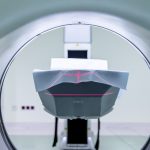Some would argue that magnetic resonance imaging (MRI) machines have become as essential to the medical field as blood tests when it comes to diagnosing and treating patients. MRIs allow doctors to see inside the human body non-invasively. A physician named
Raymond Damadian and not an engineer was actually the inventor of the earliest MRI model. Recently, MRIs have even been used to guide
ultrasound waves in Alzheimer’s treatment.
You may already know that magnets are used in magnetic resonance imaging machines, but do you know what types of magnets are used or how it works? In this blog, we are taking a look at how the magnets in MRIs allow us to see inside the human body.
Types of magnets in MRIs
Obviously, if you put a rare earth magnet up to you, you can’t see inside your body. Thankfully, the technology behind MRIs is a bit more sophisticated. Here’s how magnets are key to helping doctors look inside the human body -
hydrogen and radio waves. Humans are 60% hydrogen, because of the fat and water that make up the body. The hydrogen nuclei of your body will line up with the magnetic field emitted by the super powerful magnets in the MRI when it is turned on. Then a pulse of radio waves will cause those nuclei to return to their original direction. When that happens, the hydrogen nuclei can emit their own radio waves, which the MRI detects and lays out a map of their location and structure.
Superconductivity
Even though hydrogen and radio waves play an important part in imaging, it is the magnet that makes it all possible. The magnets in MRIs must be strong enough to emit a stable magnetic field between
.5 and 2 tesla or even stronger. In order to do that, MRIs use
superconducting magnets, or magnets that use superconductivity to reach high levels of energy. The superconductivity in MRI magnets is achieved by exposing them to very low temperatures. This is done through helium cooling systems that cool the magnets and use a vacuum system to contain the cold. To learn more about superconducting magnets and how superconductivity works, you can read our blog on
superconducting magnets here.
Without the magnetic technology in MRIs it would be hard to diagnose and treat many life-threatening diseases today. Luckily though, we have the magnets and the technology to do so and its advancing each year. Can you think of any other medical advances being made with magnets?

